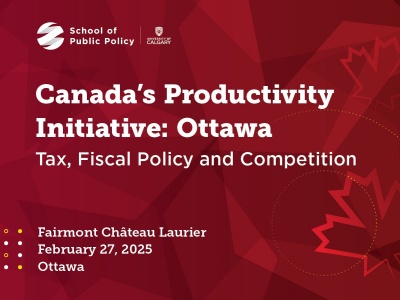Jack Mintz: Sorry Canada, but diversifying exports away from America simply isn’t realistic

After the near collapse of NAFTA, Canadians learned a lesson. With our trade tied overwhelmingly to the largest economy in the world, a lack of alternative markets means we are behind the eight ball when we negotiate trade deals with Washington.
The Trump administration said it wanted to “rebalance” NAFTA. This was no “give and take” as in 1994 when NAFTA was originally negotiated. The American negotiators’ focus was all about fixing their perceived disadvantages. The Mexicans figured this out first and worked out their own arrangement, leaving Canada in a “take it or leave it” position. We took it.
Many people say this proves that Canada needs to diversify its markets. That it’s time to rebalance our exports toward growing economies in Asia. Having alternatives would only strengthen our hand when bargaining with the United States. The federal government has hopped on the bandwagon, recently appointing Jim Carr to the newly created position of minister of international trade diversification. We should wish him luck.
It won’t be easy, though. As shown in the table above, Canada exported about $545 billion of goods and $110 billion in services in 2017. Of those, almost three-quarters of our products are shipped to the U.S. and close to three-fifths of our services are sold to Americans. Our next-largest export markets are fractions of that: Goods and services sold to China combined amount to just 4.3 per cent of total Canadian exports; the U.K. got 3.2 per cent; and Japan, 2.2 per cent. Three exports — energy, vehicles and auto parts — comprise fully two-fifths of our trade, almost all of it to the U.S. Our next-five-largest product markets, making up another fifth, are also all dominated by the U.S., with the exception of precious stones.
Canada’s total exports increased from 2012 to 2017 by 20.2 per cent. The growth in our exports to the U.S. was slightly larger at 22.2 per cent, meaning our U.S. dependence grew in recent years, despite a decline in oil and gas exports due to falling oil prices. Exports to China increased slightly less by 21.8 per cent, U.K. exports declined by 5.9 per cent and Japanese exports rose by 14.5 per cent. It will take a monumental shift in trade to reduce the importance of the American economy to Canada. It is unlikely to happen.
Why is it so challenging to shift trade to other countries? Economics, obviously. Transport costs of goods to the U.S. are the lowest, making it challenging for exporters to find higher profits by sending products and services anywhere else. It’s also easier to trade with a country that speaks the same language and where business owners often have stronger networks, including friends and family, to facilitate relationships. Our two countries’ historical ties are strong, even if they are tested sometimes.
Canada has been successful at negotiating a number of new trade deals with Europe and Asian countries. And we’ve had trade deals for some time now with Israel, Jordan, Chile, Ukraine and Costa Rica. However exports to these countries, even the ones we’ve had deals with for a while, have hardly budged. An agreement isn’t enough. It takes infrastructure, financing and better public policy to help Canadian businesses exploit foreign markets.
Over nine-tenths of our largest export — fossil fuels (worth 24.1 per cent of our exports) — is sold to the U.S. The tiny remainder is made up of coal sales to Japan, Korea, China, India and Taiwan. None of this is surprising. Our pipelines go south. Our electrical transmission system is highly integrated with the U.S. on a regional basis. Unlike Australia and the U.S., we currently have no liquefied natural gas plants capable of shipping fuel overseas.
That may change now that LNG Canada decided this month to proceed with a liquefied gas plant in Kitimat, B.C. But we won’t be able to further diversify our energy sales until we adopt a different attitude to resource development. As we saw in B.C., the go-ahead for the plant doesn’t seem to have hurt the provincial or federal governments, despite relentless talk from both Prime Minister Justin Trudeau and B.C.’s NDP-Green government about plans to reduce carbon emissions. Trudeau and Premier John Horgan have been making the case that LNG exports reduce global emissions by substituting Canadian natural gas for coal consumption in Asia.
(That almost sounds like a policy shift. If emission calculations are based on exports reducing emissions elsewhere, it provides a stronger basis for selling our fossil fuels to wider markets. And with oil sands emissions on new projects in Alberta falling to the world average, the same logic tells us that global emissions won’t be helped much if Canada produces less oil while other countries just export more.)
Diversification away from the U.S. is a big part of the argument for building pipelines to tidewater, but even if the Trans Mountain expansion gets built, we should not necessarily expect more oil going to non-U.S. markets. The pipeline would still probably end up moving Alberta oil to California heavy-oil refineries that offer better economic returns. But at least the option to shift to Asia would exist and extra pipeline capacity would reduce current discounts on our oil, our multi-billion dollar giveaway to the Americans (much like the deep discounts we’re giving Americans on our natural gas, due to a lack of LNG capacity).
After energy, our second-largest export is vehicles and parts (15 per cent of total product exports). Canada’s auto market is almost entirely hitched to North America with over 90 per cent of our trade with the U.S. The USMCA agreement creating more protection for North American production means Canada will be tied to the U.S. more, not less.
So when it comes to 40 per cent of our exports — energy and autos — we are not in position to easily diversify trade. We might have luck diversifying with other, smaller-scale exports, but it still won’t be easy to overcome the economics. Talking about diversification may be fashionable again, but it’s no match for the dominance of the U.S. in our trade flows.
Jack Mintz is the president’s fellow at the University of Calgary’s School of Public Policy.
Source: Financial Post


